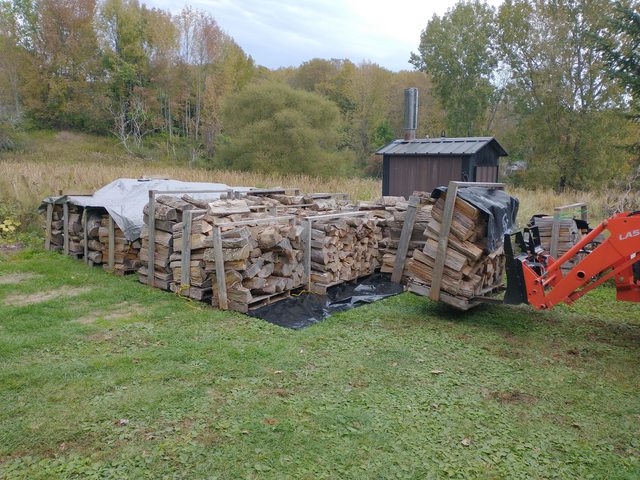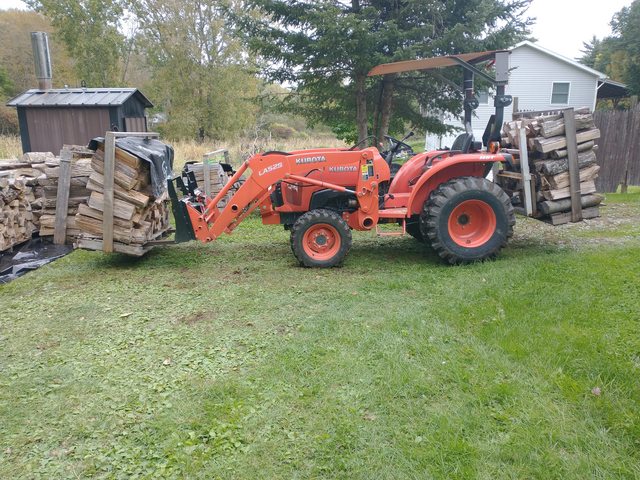Each photo shows one or more tweaks to improve in some way.
The first photo was to eliminate stacking. That was expensive to make the change from building wood racks/stacking/repairing wood racks, etc., and has really helped with that bottleneck. Hopefully cost effective as well over time.
Most adjustments are relatively low cost improvements.

I had made improvements on wood rack design. Also to the bin, reversing the scaffold jacks (ends) and adding doors to access the back of the bin from the sides, allowing three racks to be staged to fill. One in front and one on each end.

This shows alternating pallets to strengthen the support when double stacking. The bottom pallet is upside down for more surface area on the uneven tops of lower bundles.

This shows two improvements. The hydraulic lift cylinder was an add-on mod. The 4" x 6"'s help realign the conveyor with the Posch when moved and used to load a customers truck. Actually it has not moved since but will help if necessary.

I added a log deck at some point for cutting on both sides of the splitter. Also moded the SuperSplit with four wheels. The tongue is leaning against the tree, and pins behind the nursery wagon to tow to container, making set up and pickup simpler.

This shows junk bin relocated next to conveyor and nursery wagon workbench with everything I need on it. Later I added a vice to the back rack of the quad for sharpening.

This was the phenolic SuperSplit mod.

Early set up, seemed like the saw was always four steps away. Included wider sacrificial tables to cut on.

Used ice tongues for years with old hydraulic splitter. Replaced with pulp hook. Still using log deck here, but splitter is turned 180° and split into trailer to head to wood shed for personal use.

Filled in one of the log decks for short pieces and noodling. Have since added peavey holes to second 4" x 6" for moving logs endwise easier.

Another photo, not included, is the log decks removed from their spot, with a huge mound of bark and debris underneath. I've made the log decks easier to pick up and move with the fork lift for occasional and necessary clean up.



























































